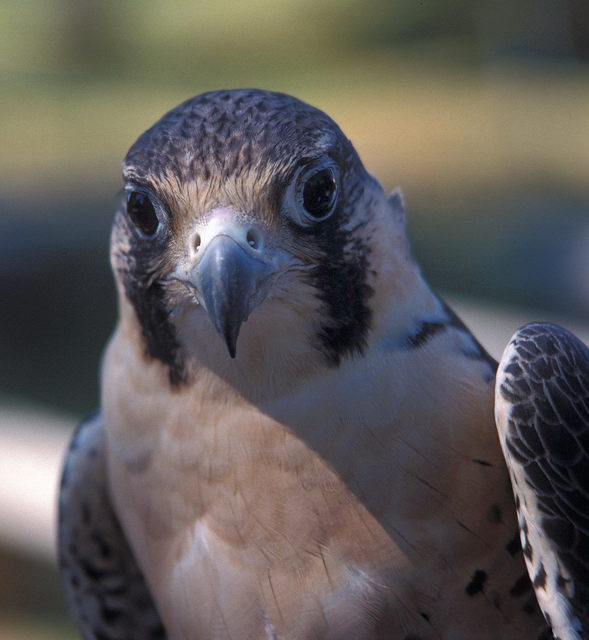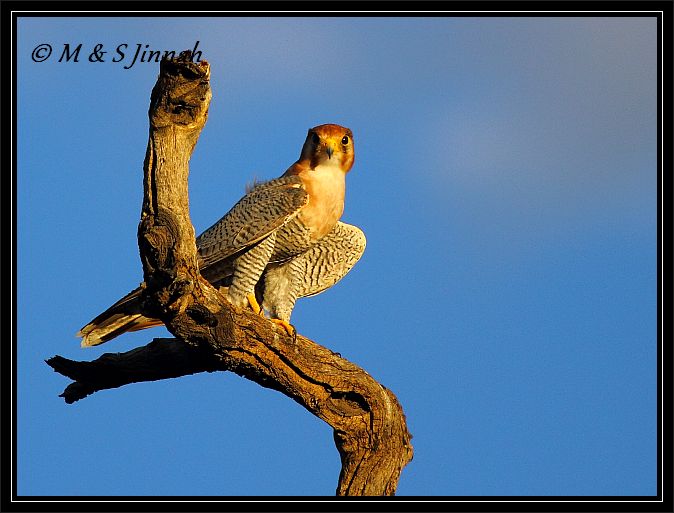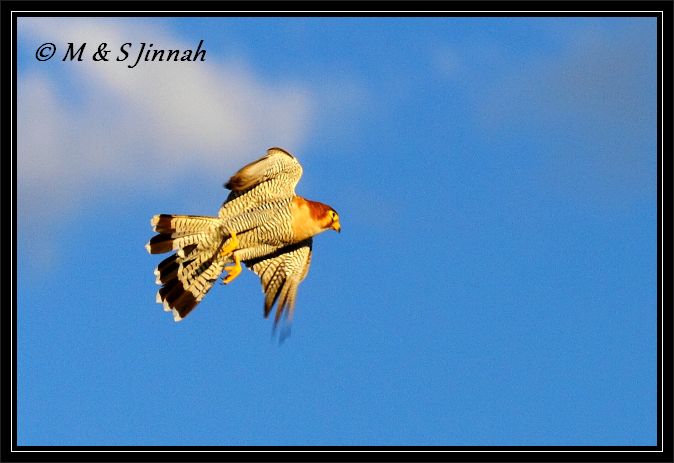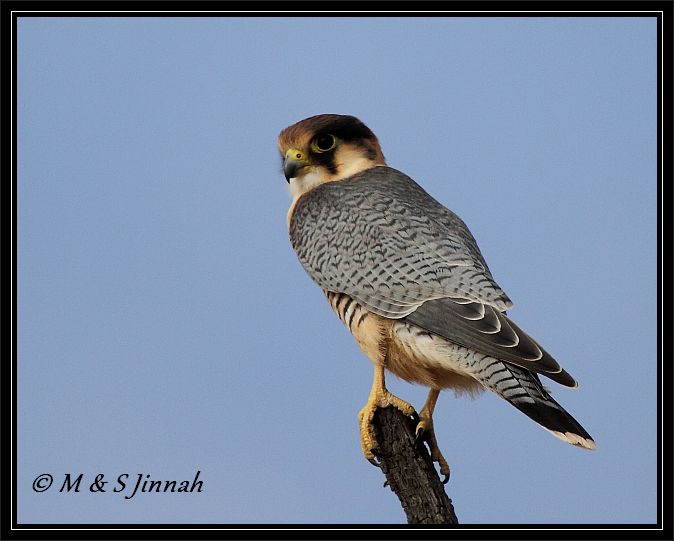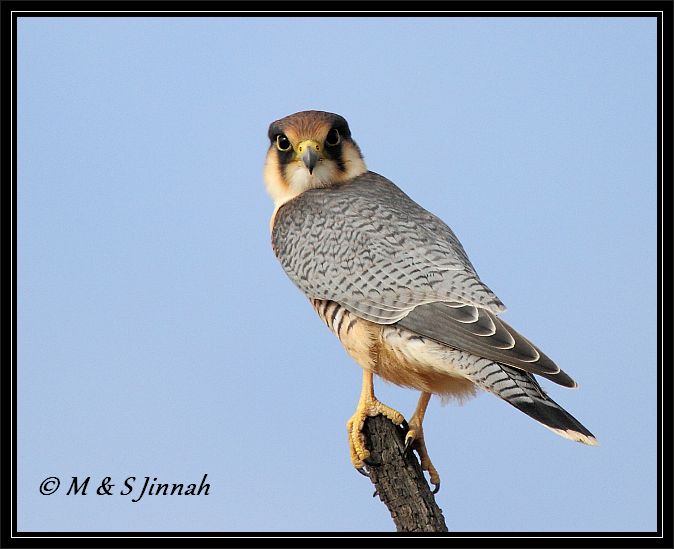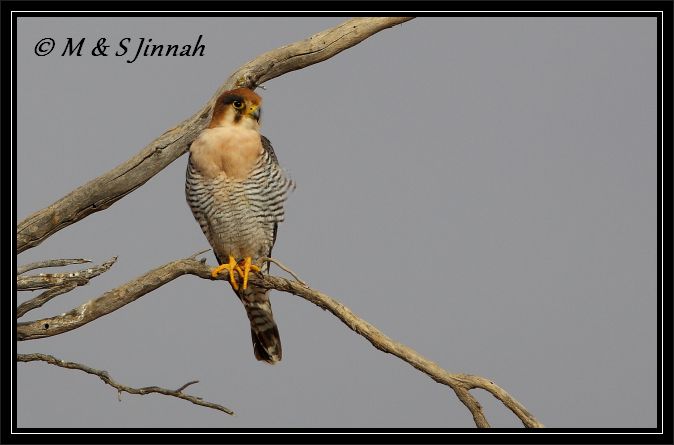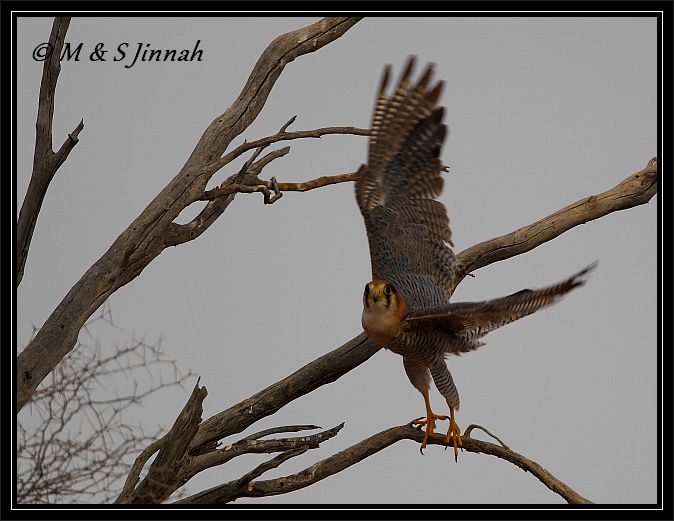I saw them in February this year. At first I didn't know what they were, but Dewi ID'd them later for me.Flutterby wrote:When did you see them in Rietvlei Amoli?
Falconidae - Bird of the Month July 2013 *
- Amoli
- Posts: 6032
- Joined: Fri Jun 01, 2012 4:30 am
- Country: South Africa
- Location: Kempton Park
- Contact:
Falconidae - Bird of the Month July 2013
Pretoriuskop
Satara
Shingwedzi
20-30 Dec 2014
Satara
Shingwedzi
20-30 Dec 2014
Re: FALCONIDAE - Bird of the Month July 2013
Peregrine Falcon breeding on Nuremberg Castle
We have a pair of Peregrine Falcons nesting in Nuremberg Castle’s Sinwellturm.
We’ve had Common Kestrels successfully nesting and breeding at Nuremberg Castle for many years, but from 2011 to 2012 the Heidenturm with their nesting site was restored and therefore another breeding box had to be installed on the Sinwellturm. When the restoration was completed the Kestrels moved back to their accomodation in the Heidenturm and raised their chicks there this season. But the breeding box on top of the Sinwelturm was taken over by a pair of Peregrine Falcons. The female laid three eggs and the first one hatched on 19 April. The pair raised two chicks who fledged on 1st June
Here two pics from the webcam: 6 May 2013
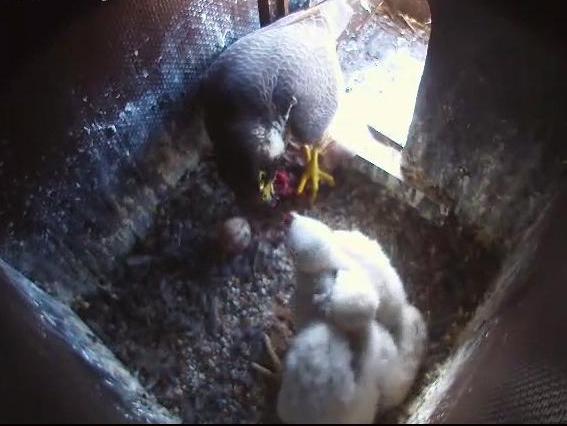
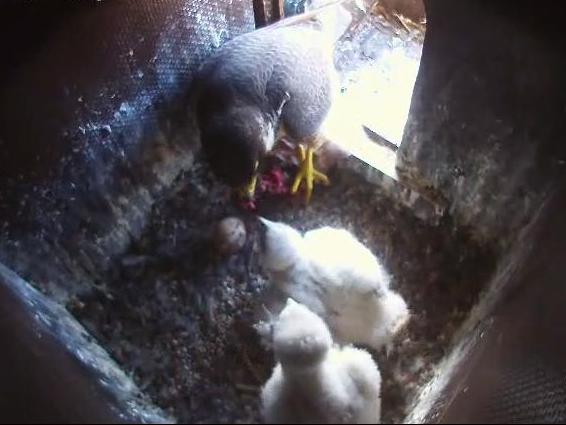
And one of the juveniles at the castle (18 June 2013)
(18 June 2013)
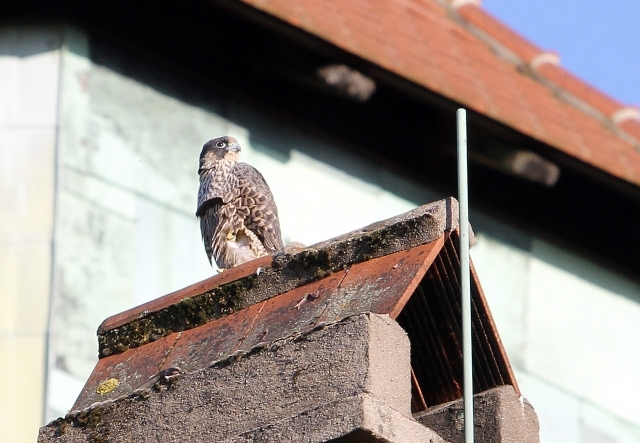


 I hope to see them around more often.
I hope to see them around more often. 
We have a pair of Peregrine Falcons nesting in Nuremberg Castle’s Sinwellturm.
We’ve had Common Kestrels successfully nesting and breeding at Nuremberg Castle for many years, but from 2011 to 2012 the Heidenturm with their nesting site was restored and therefore another breeding box had to be installed on the Sinwellturm. When the restoration was completed the Kestrels moved back to their accomodation in the Heidenturm and raised their chicks there this season. But the breeding box on top of the Sinwelturm was taken over by a pair of Peregrine Falcons. The female laid three eggs and the first one hatched on 19 April. The pair raised two chicks who fledged on 1st June
Here two pics from the webcam: 6 May 2013


And one of the juveniles at the castle

Re: FALCONIDAE - Bird of the Month July 2013
Peregrines adopt various strategies when hunting. One of the most often used is "waiting on" where a bird will climb high into the sky and soar until a likely prey species comes within stooping range.
Waiting on.
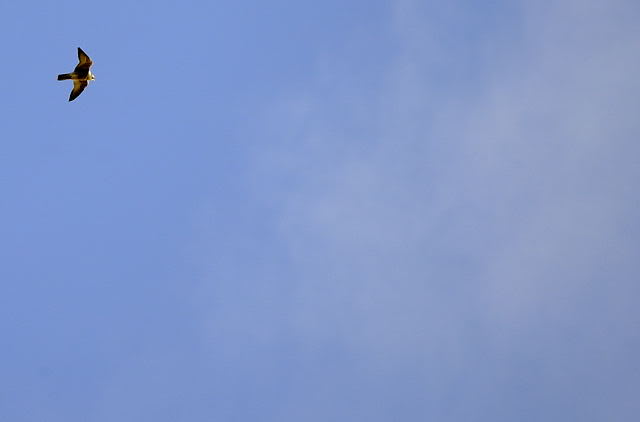
Waiting on.

Dewi
What is the good of having a nice house without a decent planet to put it on? (H D Thoreau)
What is the good of having a nice house without a decent planet to put it on? (H D Thoreau)
Re: FALCONIDAE - Bird of the Month July 2013
In a stoop after prey, Peregrines are believed to reach speeds of over 300 kph as they drop out of the sky after prey.
Stooping Peregrine.
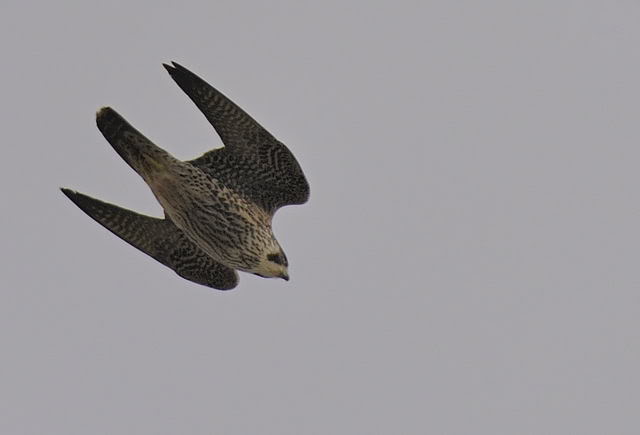
Stooping Peregrine.

Dewi
What is the good of having a nice house without a decent planet to put it on? (H D Thoreau)
What is the good of having a nice house without a decent planet to put it on? (H D Thoreau)
Re: FALCONIDAE - Bird of the Month July 2013
Dewi
What is the good of having a nice house without a decent planet to put it on? (H D Thoreau)
What is the good of having a nice house without a decent planet to put it on? (H D Thoreau)
Re: FALCONIDAE - Bird of the Month July 2013
A short excerpt from my diary notes from way back in 1984. I wrote this as a short note for an American bird group a while back, but thought you would be interested here seeing as the subject is Falcons.
From 1976 to 1984 I spent all my spare time watching or looking for Peregrine falcons. During the breeding season I would spend hours observing a pair which bred on a cliff near my home. My observation point was a grassy area at the base of the cliff which was excellent for watching hunting and display behaviour, but poor for any nesting activity on or around the eyrie ledge. I had to wait until 1984 before I finally found an eyrie which could be observed from a slightly elevated position and was also accessible without disturbing the falcons. I had made several brief visits to this eyrie, which was situated on a wide grassy ledge halfway down a cliff in a local slate quarry. I had established that the birds were incubating and on my previous visit in early May, I had noticed two young erases in the eyrie.
My notes for the 18th May 1984 read as follows: I arrived at 7:30pm and 'scoped' the eyrie ledge to find not two, but four young! I noted that the quills of their primary feathers were beginning to poke through their light grey down and that they all had bright yellow feet and blue Ceres. They were all active, scrabbling around on the nest ledge, picking at old carcasses or staring intently at anything that moved, from other birds flying overhead, to blades of grass blowing in the evening breeze.
I searched the cliff face for the adult birds and soon found the female perched on a ledge above and to the left of the eyrie. She started to call as the male flew in with a fresh kill, which was partially plumed, and circled in front of the eyrie. The female took off and flew onto the eyrie ledge where she was joined by the male who passed the kill to her. She began to feed her young who were all screaming loudly and jostling for the best position to be fed.
While all this activity was taking place, I kept hearing higher pitched Falcon calls coming from the heather on the hillside above. I knew that there were a pair of Eurasian Kestrels nesting lower down the quarry and had seen the male hunting the moor on several occasions, but these calls were different and I could not quite place them. Within a few minutes however, I was in no doubt as to what species were making those calls as a pair of Merlins flew out and stooped repeatedly at a passing Raven. The female Merlin gave up the chase and flew down into the heather and settled down as if on eggs or small young. It was evident that three species of Falcon were all breeding within close proximity of one another. I left for home thinking that this was one of the best evenings birding I had ever had - I was wrong!
The following afternoon found me at my observation post at 4:00pm. Both adult Peregrines were in full hunting mode, perched high up the cliff and fully alert for any prey passing by. They made several stoops at four separate Pigeons that wandered by, but all four birds escaped to safety. Their method of hunting was for one bird to show itself to their quarry, while the other would gain height and come stooping down in ambush. When the initial stoop failed, a free for all ensued with both birds making short stoops in an attempt to secure a kill.
The Merlins, meanwhile, were having more luck as the male chased and caught a Meadow Pipit over the moor and flew back to its mate where a food pass took place. The female Merlin took the pipit into her eyrie, where I could hear young calling.
A few minutes later a female Hen Harrier flew into view, quartering the higher moor searching for prey. I watched her for ten minutes as she methodically scanned the ground for small mammals or birds, but she was not successful and eventually drifted behind the hill and out of sight. A Common Buzzard soared over the quarry and was joined by a pair of Ravens. Red-billed Chough wheeled in and out of the gullies below while a flock of Twite were busy feeding on the grass ledges at the side of a nearby track. Ring Ouzels, Wheatears and Stonechats were all singing from various perches while in the sky above me Skylarks and Meadow Pipits performed their 'parachuting' display flights and a Wren was busy feeding young in her nest in the side of the old abandoned building which had also served as my observation post.
I left that evening knowing that I had just been witness to one of the most memorable birding moments in my life.
From 1976 to 1984 I spent all my spare time watching or looking for Peregrine falcons. During the breeding season I would spend hours observing a pair which bred on a cliff near my home. My observation point was a grassy area at the base of the cliff which was excellent for watching hunting and display behaviour, but poor for any nesting activity on or around the eyrie ledge. I had to wait until 1984 before I finally found an eyrie which could be observed from a slightly elevated position and was also accessible without disturbing the falcons. I had made several brief visits to this eyrie, which was situated on a wide grassy ledge halfway down a cliff in a local slate quarry. I had established that the birds were incubating and on my previous visit in early May, I had noticed two young erases in the eyrie.
My notes for the 18th May 1984 read as follows: I arrived at 7:30pm and 'scoped' the eyrie ledge to find not two, but four young! I noted that the quills of their primary feathers were beginning to poke through their light grey down and that they all had bright yellow feet and blue Ceres. They were all active, scrabbling around on the nest ledge, picking at old carcasses or staring intently at anything that moved, from other birds flying overhead, to blades of grass blowing in the evening breeze.
I searched the cliff face for the adult birds and soon found the female perched on a ledge above and to the left of the eyrie. She started to call as the male flew in with a fresh kill, which was partially plumed, and circled in front of the eyrie. The female took off and flew onto the eyrie ledge where she was joined by the male who passed the kill to her. She began to feed her young who were all screaming loudly and jostling for the best position to be fed.
While all this activity was taking place, I kept hearing higher pitched Falcon calls coming from the heather on the hillside above. I knew that there were a pair of Eurasian Kestrels nesting lower down the quarry and had seen the male hunting the moor on several occasions, but these calls were different and I could not quite place them. Within a few minutes however, I was in no doubt as to what species were making those calls as a pair of Merlins flew out and stooped repeatedly at a passing Raven. The female Merlin gave up the chase and flew down into the heather and settled down as if on eggs or small young. It was evident that three species of Falcon were all breeding within close proximity of one another. I left for home thinking that this was one of the best evenings birding I had ever had - I was wrong!
The following afternoon found me at my observation post at 4:00pm. Both adult Peregrines were in full hunting mode, perched high up the cliff and fully alert for any prey passing by. They made several stoops at four separate Pigeons that wandered by, but all four birds escaped to safety. Their method of hunting was for one bird to show itself to their quarry, while the other would gain height and come stooping down in ambush. When the initial stoop failed, a free for all ensued with both birds making short stoops in an attempt to secure a kill.
The Merlins, meanwhile, were having more luck as the male chased and caught a Meadow Pipit over the moor and flew back to its mate where a food pass took place. The female Merlin took the pipit into her eyrie, where I could hear young calling.
A few minutes later a female Hen Harrier flew into view, quartering the higher moor searching for prey. I watched her for ten minutes as she methodically scanned the ground for small mammals or birds, but she was not successful and eventually drifted behind the hill and out of sight. A Common Buzzard soared over the quarry and was joined by a pair of Ravens. Red-billed Chough wheeled in and out of the gullies below while a flock of Twite were busy feeding on the grass ledges at the side of a nearby track. Ring Ouzels, Wheatears and Stonechats were all singing from various perches while in the sky above me Skylarks and Meadow Pipits performed their 'parachuting' display flights and a Wren was busy feeding young in her nest in the side of the old abandoned building which had also served as my observation post.
I left that evening knowing that I had just been witness to one of the most memorable birding moments in my life.
Dewi
What is the good of having a nice house without a decent planet to put it on? (H D Thoreau)
What is the good of having a nice house without a decent planet to put it on? (H D Thoreau)
- nan
- Posts: 26484
- Joined: Thu May 31, 2012 9:41 pm
- Country: Switzerland
- Location: Central Europe
- Contact:
Falconidae - Bird of the Month July 2013
Red-necked Falcon/Faucon chicquera
Nossob, ready for the migration... like a lot of Black Kites too, two years ago
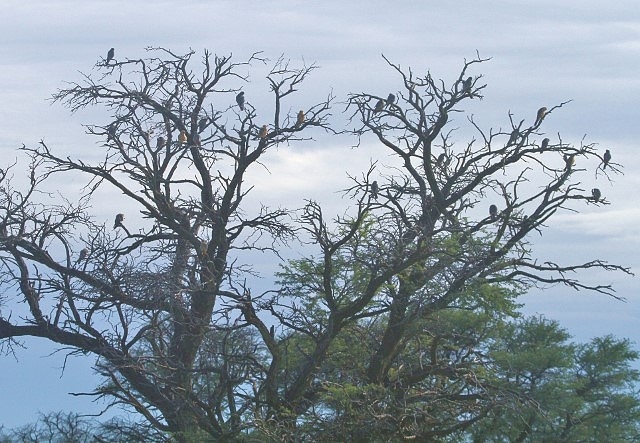
13rd or 14th waterhole, March 2013
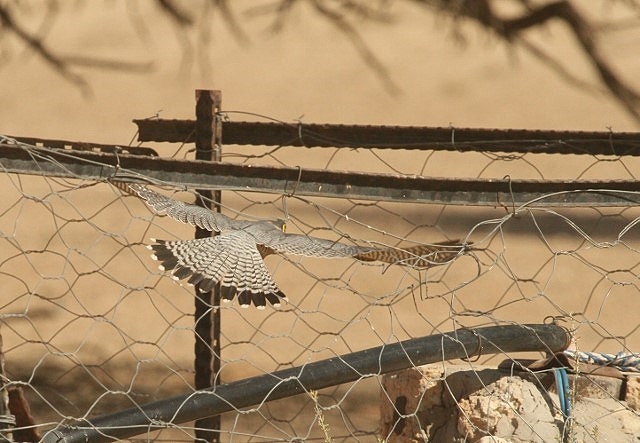 to see the tail
to see the tail
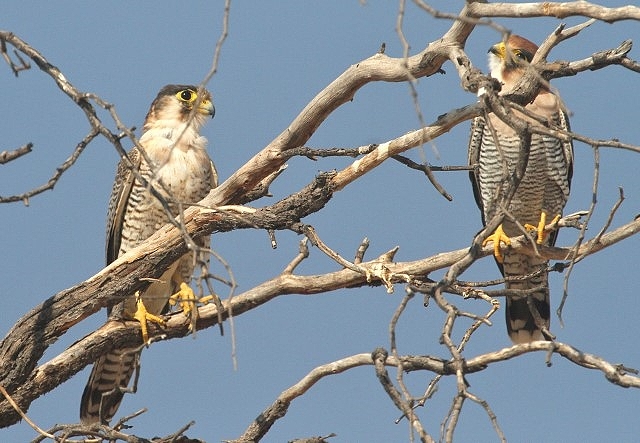
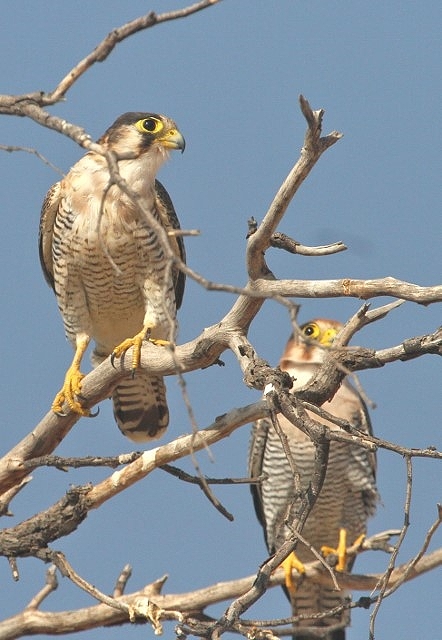
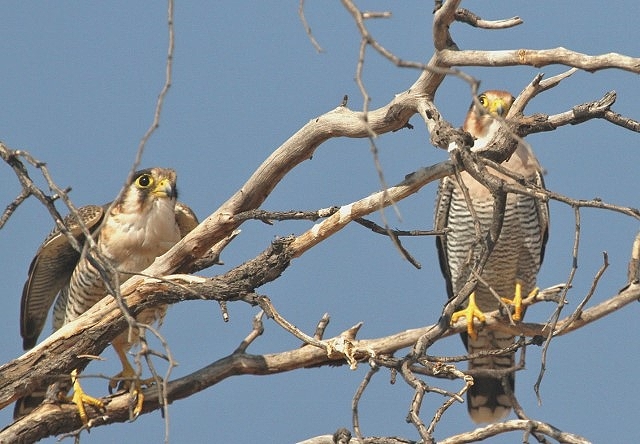
Dewi, you can tell if there is a couple, male and female or juv and adult
Nossob, ready for the migration... like a lot of Black Kites too, two years ago

13rd or 14th waterhole, March 2013
 to see the tail
to see the tail 


Dewi, you can tell if there is a couple, male and female or juv and adult
Kgalagadi lover… for ever
https://safrounet.piwigo.com/
https://safrounet.piwigo.com/
- nan
- Posts: 26484
- Joined: Thu May 31, 2012 9:41 pm
- Country: Switzerland
- Location: Central Europe
- Contact:
Falconidae - Bird of the Month July 2013
Red-footed Falcon / Faucon Kobez
Kgalagadi, around Nossob, February 2011
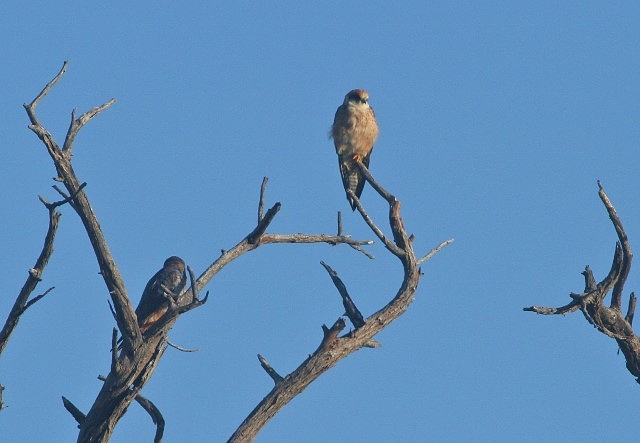
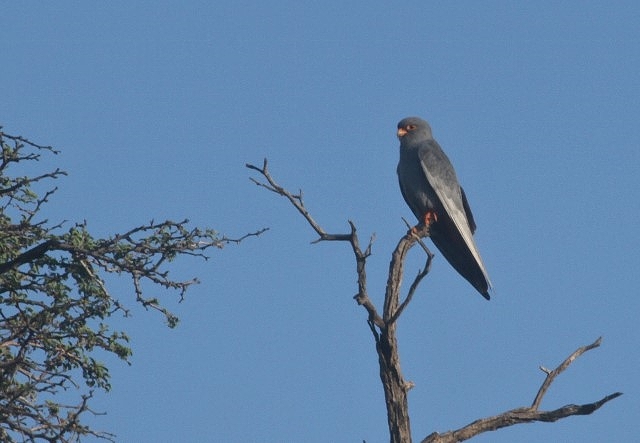
Kgalagadi, around Nossob, February 2011


Kgalagadi lover… for ever
https://safrounet.piwigo.com/
https://safrounet.piwigo.com/
Falconidae - Bird of the Month July 2013
Cracking shots Nan. 
Think they are both adults Nan. Juvs are much darker & browner underneath I think.
Think they are both adults Nan. Juvs are much darker & browner underneath I think.
Dewi
What is the good of having a nice house without a decent planet to put it on? (H D Thoreau)
What is the good of having a nice house without a decent planet to put it on? (H D Thoreau)



